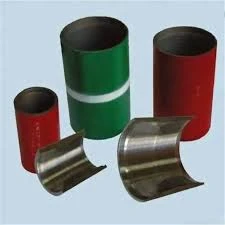- Afrikaans
- Albanian
- Amharic
- Arabic
- Armenian
- Azerbaijani
- Basque
- Belarusian
- Bengali
- Bosnian
- Bulgarian
- Catalan
- Cebuano
- Corsican
- Croatian
- Czech
- Danish
- Dutch
- English
- Esperanto
- Estonian
- Finnish
- French
- Frisian
- Galician
- Georgian
- German
- Greek
- Gujarati
- Haitian Creole
- hausa
- hawaiian
- Hebrew
- Hindi
- Miao
- Hungarian
- Icelandic
- igbo
- Indonesian
- irish
- Italian
- Japanese
- Javanese
- Kannada
- kazakh
- Khmer
- Rwandese
- Korean
- Kurdish
- Kyrgyz
- Lao
- Latin
- Latvian
- Lithuanian
- Luxembourgish
- Macedonian
- Malgashi
- Malay
- Malayalam
- Maltese
- Maori
- Marathi
- Mongolian
- Myanmar
- Nepali
- Norwegian
- Norwegian
- Occitan
- Pashto
- Persian
- Polish
- Portuguese
- Punjabi
- Romanian
- Russian
- Samoan
- Scottish Gaelic
- Serbian
- Sesotho
- Shona
- Sindhi
- Sinhala
- Slovak
- Slovenian
- Somali
- Spanish
- Sundanese
- Swahili
- Swedish
- Tagalog
- Tajik
- Tamil
- Tatar
- Telugu
- Thai
- Turkish
- Turkmen
- Ukrainian
- Urdu
- Uighur
- Uzbek
- Vietnamese
- Welsh
- Bantu
- Yiddish
- Yoruba
- Zulu
Understanding Casing Pup Joints in Oil and Gas Drilling Operations
Understanding Casing Pup Joints Importance and Applications in Oil and Gas
Casing pup joints are essential components in the oil and gas industry, specifically in drilling and well completion processes. As a vital part of the casing string, these short sections of pipe, typically less than 10 feet long, play a significant role in ensuring the integrity and functionality of the entire well system. This article delves into what casing pup joints are, their importance, and their various applications in the industry.
What Are Casing Pup Joints?
Casing pup joints are short lengths of tubular products that connect other casing sections in a wellbore. They are designed to provide precise lengths and help adjust the overall height of the casing string. Made from the same materials as standard casing, they often come in various dimensions and specifications to fit specific well requirements. The term pup joint originates from the idea that these joints are used to pup or fill the gaps in a casing string.
Key Functions of Casing Pup Joints
1. Length Adjustments One of the primary functions of casing pup joints is to enable the ability to make precise adjustments in the casing string's total length. This is crucial during the drilling process, where discrepancies in length can create complications.
2. Facilitating Assembly Casing pup joints make the assembly of the casing string more flexible and efficient. They allow for easier handling and placement, ensuring that the complete structure can be assembled as required.
3. Maintaining Pressure Integrity Pup joints contribute to maintaining the pressure integrity of the casing system. Given that the components must endure significant pressure during drilling and production, the pup joints need to meet strict quality standards to ensure the well's safety and performance.
casing pup joint

4. Isolation of Zones In some cases, pup joints can also be used to isolate different zones in a well. This isolation helps reduce cross-flow and ensures that each section of the reservoir can be managed effectively.
Applications of Casing Pup Joints
Casing pup joints find a plethora of applications across various phases of well construction and operation
- Drilling Operations During drilling, pup joints facilitate the connection of casing sections as the wellbore deepens. They accommodate the variations in depth and can be customized for the specific needs of the well.
- Well Completion In the completion phase, pup joints play a role in configuring the well head and preparing for production. The ability to adjust lengths precisely allows for better alignment with production tubing and other well completion components.
- Workover Operations Casing pup joints are also utilized during workover operations, which involve the intervention and maintenance of existing wells. Their flexibility in sizing makes them invaluable when modifications need to be made without significantly altering the structure of the existing casing.
Conclusion
Casing pup joints may seem like minor components within the overarching framework of oil and gas operations, but their importance cannot be understated. They enhance the efficiency and adaptability of drilling and completion processes while ensuring the structural integrity necessary for safe and effective hydrocarbon extraction. As the industry continues to evolve and seek more efficient practices, the role of such components will likely expand, reinforcing the importance of understanding and utilizing casing pup joints effectively in oil and gas operations.
-
Tubing Pup Joints: Essential Components for Oil and Gas OperationsNewsJul.10,2025
-
Pup Joints: Essential Components for Reliable Drilling OperationsNewsJul.10,2025
-
Pipe Couplings: Connecting Your World EfficientlyNewsJul.10,2025
-
Mastering Oilfield Operations with Quality Tubing and CasingNewsJul.10,2025
-
High-Quality Casing Couplings for Every NeedNewsJul.10,2025
-
Boost Your Drilling Efficiency with Premium Crossover Tools & Seating NipplesNewsJul.10,2025







